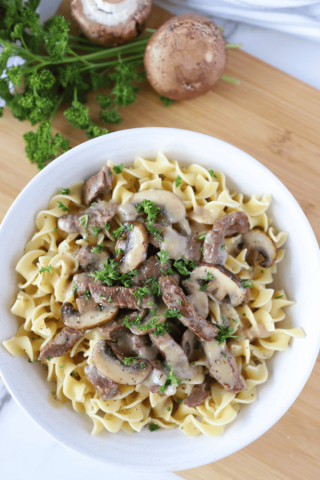
Salt is in the news a lot lately. Most reports say Americans are consuming too much of it. How much do you REALLY know about salt? Test your "salt savvy" with the following quiz!
Before you read further, you may wonder, "What's the difference between "salt" and "sodium"? According to the Centers for Disease Control and Prevention:
- Sodium chloride is the chemical name for salt.
- The words salt and sodium are not exactly the same, yet these words are often used in place of each other. For example, the Nutrition Facts Panel uses "sodium" whereas the front of the package may say "low salt."
- Ninety percent of the sodium we consume is in the form of salt.
Questions
1) The Dietary Guidelines for Americans 2020-2025, recommends for most people 14 years and older, sodium intake should not exceed:
a. 1,500 mg/day
b. 2,300 mg/day
c. 3,000 mg/day
2) What is the approximate average daily sodium intake for Americans 2 years and older?
a. 800 mg
b. 1,500 mg
c. 2,300 mg
d. 3,400 mg
3) Which of the following are benefits from reducing the amount of sodium in our diets?
a. Lowered blood pressure
b. Reduced risk of heart disease
c. Reduced risk of stroke
d. All of the above
4) Approximately how much of our sodium comes from processed foods?
a. 45%
b. 55%
c. 65%
d. 71%
5) How much sodium is in a teaspoon of salt?
a. 1,300 mg
b. 2,300 mg
c. 3,300 mg
6) Can foods be high in salt without tasting salty?
a. Yes
b. No
7) Based on the Nutrition Facts label at right, how much sodium is in one serving of the food?
a. 30 mg
b. 160 mg
c. 470 mg
Answers
1) b. 2,300 mg. The Dietary Guidelines for Americans 2020-2025 recommends "For most people ages 14 years and older, sodium intake should not exceed 2,300 mg/day. Intake below this level is recommended for children younger than 14 years old and people who have prehypertension or hypertension (i.e., high blood pressure)."
2) d. 3,400 mg. This amount equals about 1.5 teaspoons of salt per day.
3) d. All of the above.
4) d. 71 percent. About 71 percent of the salt we consume is added during processing by manufacturers. The most effective strategies for reducing sodium are choosing more fresh, less processed items and to use less salt during food preparation.
5) b. 2,300 mg.
6) a. Yes. A food can taste sweet and still contain a significant amount of salt. The best way to determine the amount of salt in a food is to check the Nutrition Facts Label.
7) b. 160 mg. When reading nutrition labels, it is important to check the amount of sodium in the serving size you are consuming. For example, if you ate 2 servings of this food, you would consume 320 mg of sodium.
To Reduce the Salt in Your Diet, Try These Tips
- Check food labels for salt and compare brands and varieties for those lower in salt. Many manufacturers are in the process of producing lower salt foods — continue to check labels periodically for lowered amounts of sodium in foods.
- Eat more fresh foods (fruits, vegetables, lean meats, seafood, and poultry). Frozen vegetables are typically lower in sodium than canned vegetables.
- Look for low-sodium products or foods without added salt to replace regular higher-sodium foods. For example, check for no-added-salt or low-sodium versions of broth, vegetables, etc.
- Avoid salting food during cooking or reduce the amount of salt you add in cooking. An exception might be yeast breads where the salt works together with the yeast in the rising process.
- Request salt not be added to your food when eating out.
- Use flavorings other than salt, such as spices and herbs, citrus juices and zest, and flavored vinegars.
Sources:
Centers for Disease Control and Prevention, Sodium, Potassium and Health
Centers for Disease Control and Prevention, Salt.
U.S. Department of Health and Human Services and U.S. Department of Agriculture. 2020 – 2025 Dietary Guidelines for Americans. 9th Edition. December 2020.
Article originally written by Alice Henneman, MS, RDN. Reviewed and updated in 2021.
Feedback Form
Feedback Form
If you do not see the article, please scroll up the page.







